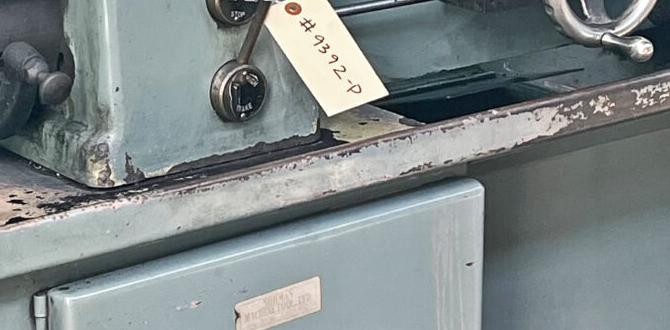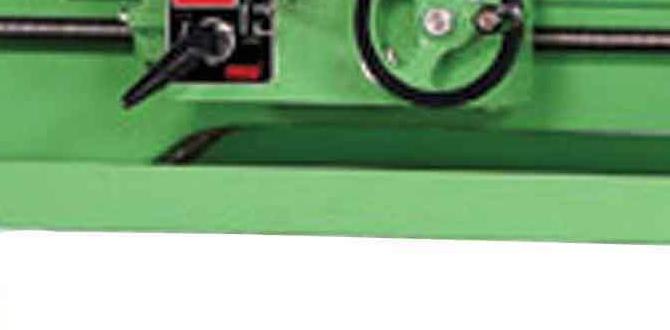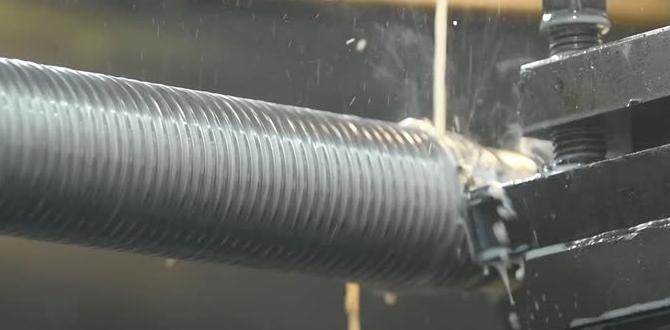Brilliant Homemade Wood Lathe Dust Collector DIY
Creating a homemade wood lathe dust collector DIY project is a fantastic endeavor for any woodworker looking to improve their workshop environment. Not only does it significantly reduce airborne wood dust, which can be a serious health hazard, but it also keeps your workspace cleaner and your tools in better condition. Fine wood dust, especially from certain hardwoods, can irritate lungs, trigger allergies, and even pose a fire risk if allowed to accumulate. Investing time and a relatively modest amount of money into a DIY dust collection system for your wood lathe is a decision you won’t regret. This article will guide you through the process, highlighting key considerations and offering practical advice to help you build your own effective system.
Why is a Dust Collector Essential for Your Wood Lathe?
Woodturning generates a substantial amount of wood chips and fine dust. Unlike sawing or sanding, where dust extraction can be more straightforward, the spinning nature of a lathe means that particles are flung outwards in all directions. This creates a pervasive cloud of dust that settles on every surface, including your clothes, skin, and lungs.
A dedicated dust collector addresses this issue by actively drawing the airborne particles away from the source for lathe turning. Standard shop vacuums, while useful for general cleanup, often lack the airflow (CFM – Cubic Feet per Minute) and filtration capabilities to effectively manage the volume and fineness of wood dust produced by a lathe. A properly designed dust collector will capture the majority of this debris before it has a chance to disperse into the workshop, leading to:
Improved Air Quality: Reduced dust means a healthier environment for you and anyone else who uses the workshop. This is paramount for long-term health.
Enhanced Visibility: Less dust in the air means you can see your work more clearly, leading to greater accuracy and safety.
Cleaner Workspace: Significantly less time spent sweeping and wiping down surfaces.
Extended Tool Life: Fine dust can infiltrate bearings and motors on other workshop tools, causing premature wear and tear.
Designing Your Homemade Wood Lathe Dust Collector DIY
The core principle behind any dust collection system is airflow. You need a powerful motor and fan to create sufficient suction, a way to separate the bulk of the debris from the air, and effective filtration to capture the fine particles. For a woodworking lathe, the collector needs to be positioned strategically to capture the dust at its source.
Key Components to Consider:
1. The Collection Impeller/Fan: This is the heart of your dust collector. You’ll need a motor with sufficient horsepower (typically 1 HP or higher for a dedicated lathe collector) coupled with a fan blade designed for moving air and particulate matter. Many DIYers repurpose components from old vacuum cleaners or industrial fans, but buying a dedicated fan and motor assembly can offer better performance and reliability.
2. The Dust Separator: The most crucial element for capturing larger chips and preventing your filter from clogging too quickly is a dust separator. This is often achieved using a cyclone design. The cyclone spins the incoming air and debris, forcing the heavier particles to the outer walls and down into a collection bin, while allowing cleaner air to pass through to the filter.
The “Thein” Separator: A simpler, but still effective, alternative to a full cyclone involves a baffle inside a large trash can lid that directs dust downwards.
Bucket or Drum System: A common setup involves a 55-gallon drum or a smaller sturdy plastic bin. The cyclone or separator lid attaches to this, and the bin collects the separated dust.
3. Filtration: After the bulk of the dust is separated, the remaining air is passed through a filter. For woodworking dust, a pleated filter designed for fine particulate matter is recommended. Look for filters with a MERV (Minimum Efficiency Reporting Value) rating of 13 or higher. Many commercial dust collectors use 1-micron or even sub-micron filters. For a DIY setup, a good quality furnace filter or a specialized woodworking filter can be adapted.
4. Ducting and Capture Hood: This is how the dust gets from your lathe to the collector. Flexible or rigid ducting connects the collector to a specially designed capture hood that fits snugly around your lathe’s tool rest or bed gap. The shape and placement of this hood are critical for efficient dust capture.
Building Your Homemade Wood Lathe Dust Collector DIY: Step-by-Step
While specific designs vary, here’s a general outline for constructing a functional homemade wood lathe dust collector DIY.
Step 1: Gather Your Materials
Motor and Fan Assembly: A 1 HP motor (or higher) with a suitable fan.
Collection Bin: A 30-55 gallon steel or heavy-duty plastic drum, or a large plastic garbage can.
Cyclone/Separator Lid: This can be purchased as a kit or fabricated from sheet metal or sturdy plywood. Many plans are available online for DIY cyclone designs.
Filter: A high-efficiency pleated filter (e.g., 1-micron rating suitable for woodworking).
Ducting: Flexible or rigid PVC piping, appropriate diameter for your fan outlet and hood.
Hose Clamps and Fittings:
Wood for Housing/Stand: Plywood, MDF, or dimensional lumber to build an enclosure for the motor/fan and a stand to support the collection drum.
Hardware: Screws, bolts, hinges, etc.
Optional: Casters for mobility.
Step 2: Construct the Dust Separator
If you’re building a cyclone, meticulously follow the plans for precise angles and dimensions. The effectiveness of the cyclone hinges on its geometry. Mount the cyclone lid securely onto the collection drum. Ensure an airtight seal. If using a Thein baffle system, carefully cut and attach the baffle inside the drum lid.
Step 3: Mount the Motor and Fan
Build a sturdy frame or enclosure to house the motor and fan assembly. Ensure it’s stable and securely mounted. Connect the fan outlet directly to the inlet of your dust separator. Use appropriate ducting and clamps for a leak-free connection. Vibration dampening might be necessary for quieter operation.
Step 4: Integrate the Filter
Mount the filter unit so that the air passes through it after the separator but before being exhausted back into the workshop. This ensures the filter only has to handle the finest particles. Most DIY designs incorporate the filter into the top of the collection drum or within the housing that surrounds the fan.
Step 5: Design and Build the Capture Hood
This is where you’ll tailor the system to your lathe. The hood should be positioned as close to the workpiece as possible to effectively capture dust. Some common approaches include:
Tool Rest Mount: Fabricate a hood that attaches directly to your tool rest, pivoting with it.
Bed Mount: Create a bracket that attaches to the lathe bed and extends a hood over the turning area.
Flexible Arm: Use a flexible gooseneck arm to position a small hood precisely where needed.
Ensure the ducting connection to the hood is robust. Consider a magnetic attachment or a quick-release clamp for easy removal.
Step 6: Connect and Test
Connect the capture hood to the dust collector’s output using appropriate ducting. Seal all connections with tape or sealant if necessary. Turn on the system and check for any air leaks. Observe how well it collects dust during a turning session. You may need to adjust the hood’s position or airflow.
Fine-Tuning Your Homemade Wood Lathe Dust Collector
Airflow Adjustments: If your system isn’t capturing enough dust, you might need a stronger motor, a larger fan, or to reduce the number of bends in your ducting. Conversely, if the suction is too strong and pulls away fine shavings you want to keep, you might consider a blast gate to partially close off airflow.
Filter Maintenance: Regularly check and clean or replace your filter according to the manufacturer’s recommendations. A clogged filter drastically reduces airflow and collection efficiency.
* Collection Bin Management: Empty the collection bin frequently. A ¾ full bin can still impede airflow.
Building a homemade wood lathe dust collector DIY is a rewarding project that pays dividends in a cleaner, healthier workshop. With careful planning and execution, you can create a system that rivals the performance of many commercial units, all while customizing it perfectly to your needs and budget. Enjoy turning dust-free!




